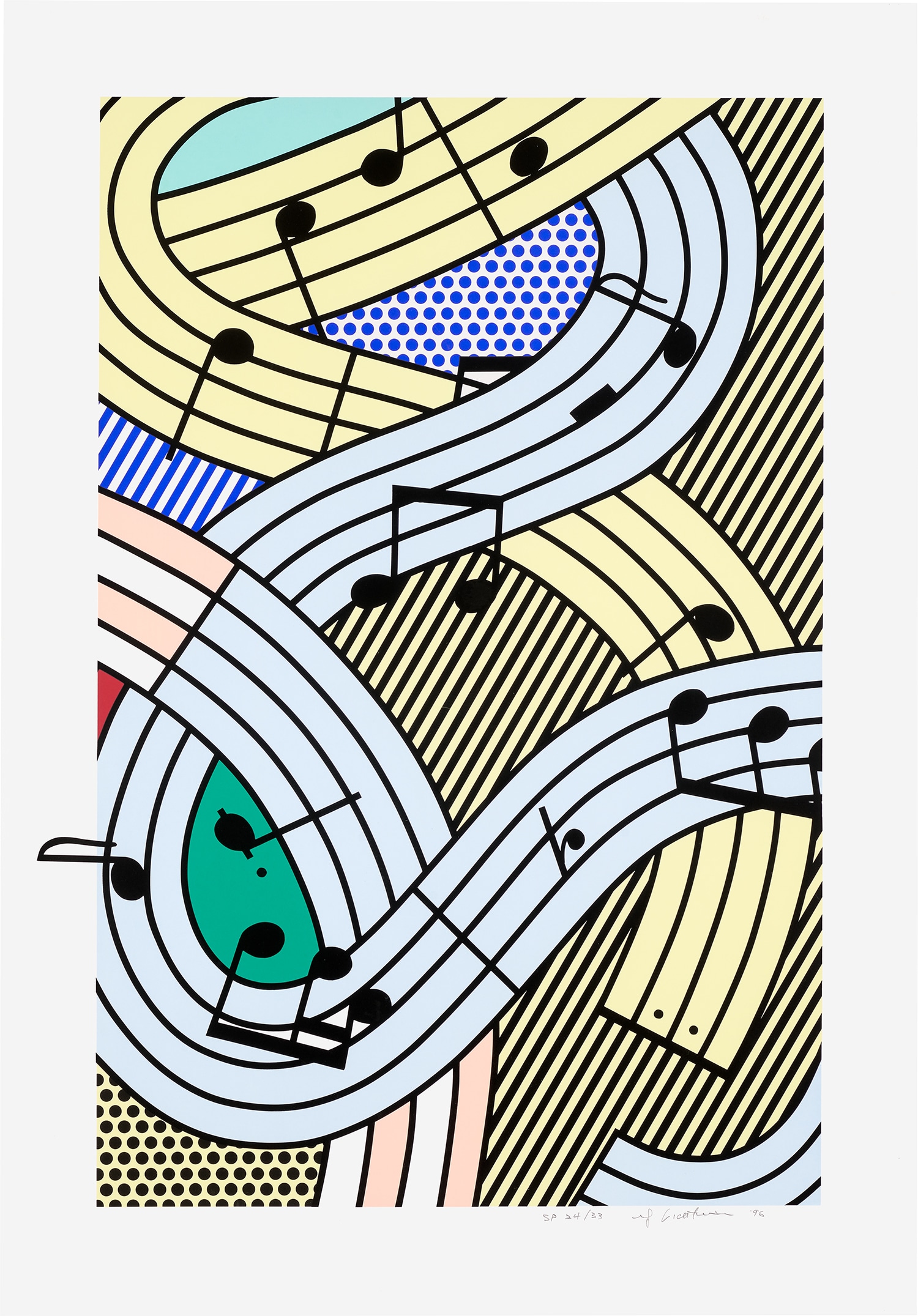
112
Roy Lichtenstein
Composition III (G. 1679, C. 299)
- Estimate
- £10,000 - 15,000‡
S. 129.5 x 90.2 cm (50 7/8 x 35 1/2 in.)
Further Details
“What I really want to do is music, but I won’t give up my day job!”
—Roy Lichtenstein
Roy Lichtenstein's musical Composition series of 1996 brings the spirit of soul and jazz to screenprint. The work presents a synesthetic experience that bridges the gap between sight and sound, as sinuous lines of melodic sheet music weave their way across the composition. No longer fixed in their usual horizontal rigidity, crotchets and quavers break free of the staves as if to produce an auditory cacophony reflected in the busy, dynamic composition. With notes scattered arbitrarily across the page – even breaking into the margin – the curves of the flowing musical bars weave themselves together, conveying movement as the musical notation is set free.“[Lichtenstein] loved music and the studio was always filled with the sounds he loved… those musical notes found their way into his paintings.”
—Dorothy Lichtenstein
Music was one of Lichtenstein’s greatest loves, finding in it both an emotional release and a consistent source of inspiration. Trained in piano, flute and saxophone, Lichtenstein spent his teenage years frequenting music clubs around New York City; a time that coincided with the renewed era of jazz, which had a stronghold over the city’s music scene. The artist’s passion for jazz and soul infiltrated his lyrical compositions from as early as the mid-1960s. For instance, in The Melody Haunts My Reverie (1965) we see a blonde woman rendered in Lichtenstein’s classic Ben Day dot-style, exclaiming with a pained look on her face: “the melody haunts my reverie...” – a quote from Hoagy Carmichael’s 1927 song “Stardust”. The speech bubble is book-ended by three quavers positioned as musical quotation marks, blurring the line between speech and song and thus proposing an affinity between the visual and auditory.
Commenting on his relationship with music, Lichtenstein’s wife Dorothy stated that the artist “loved music and the studio was always filled with the sounds he loved… those musical notes found their way into his paintings.” In the Composition series, the manner in which the music notes break free from the compositions responds to the improvisatory nature and freedom from compositional structure found in jazz and soul music, as well as Lichtenstein’s own artistic liberation; we can almost hear the syncopated beats in the sporadic polyrhythmic notation. Lichtenstein’s Composition series, therefore, offers a captivating visual representation of the sounds and soul of jazz music; a personal testament to the artist’s own love of music as well as a statement reacting to the New York jazz scene around him.